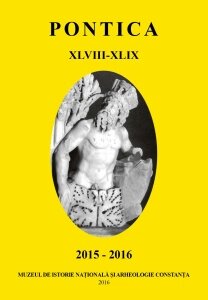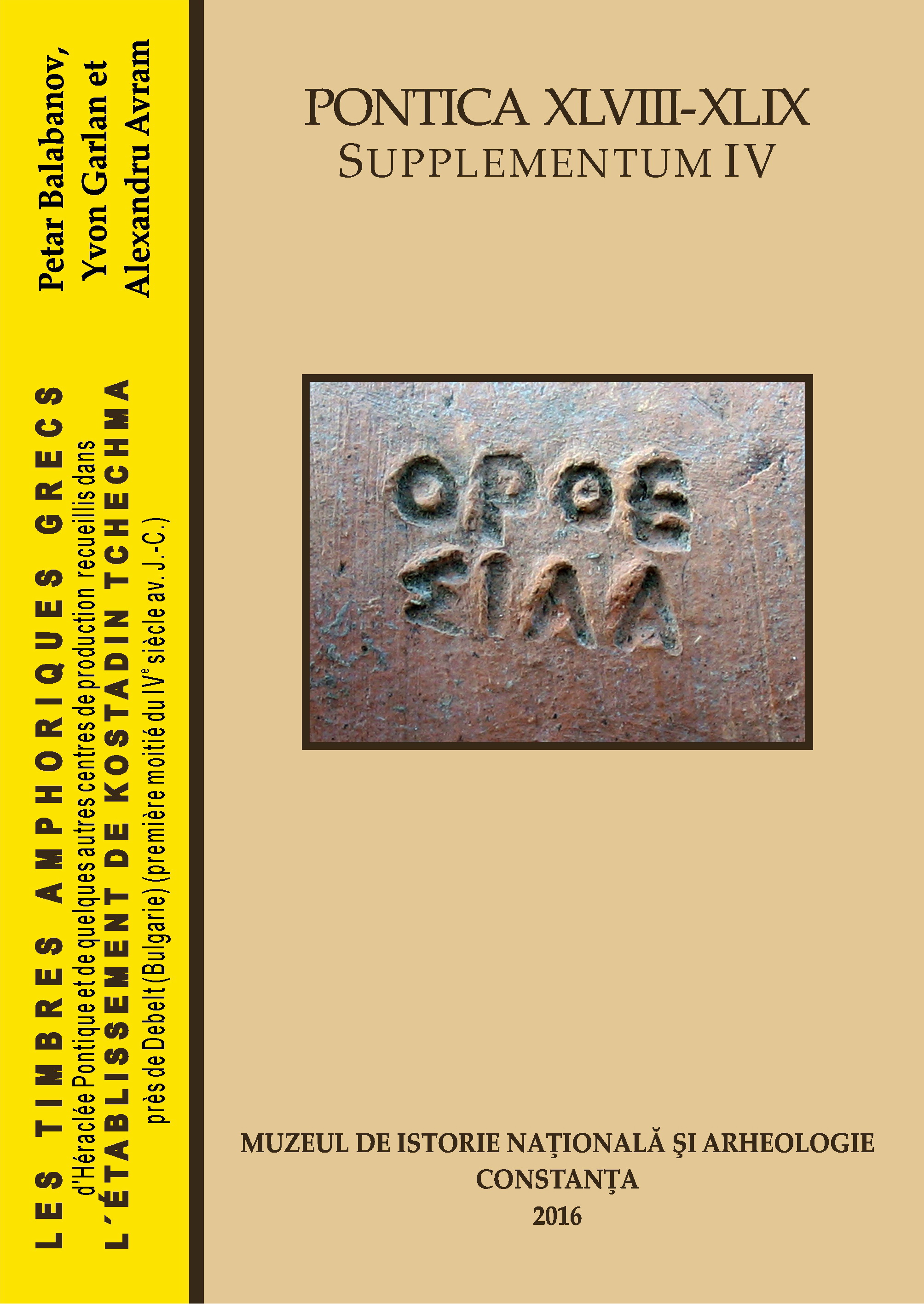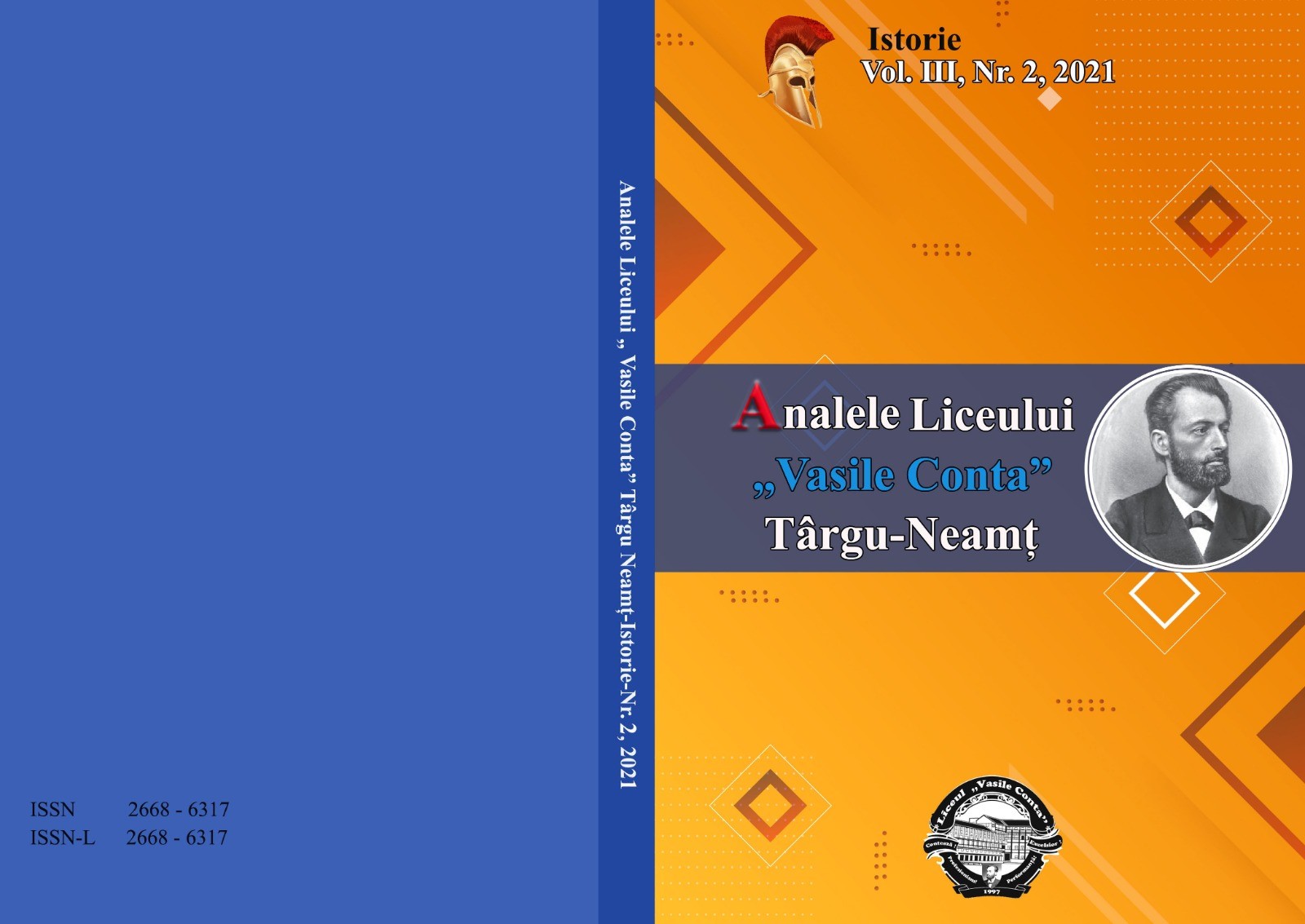Author(s): Valentina Voinea,Glicherie Caraivan,Mihai Florea / Language(s): English
Issue: 48-49/2015
The investigation conducted within the HERAS project allowed the extension of certain old investigations regarding the prehistoric dwellings located along the Constanța County coast (between Sinoe Lake and Vama Veche). The landscape changes developing in the fifth millennium BC along the West‐Pontic coast had a major impact upon the inhabiting Eneolithic communities’ evolution. After a delayed and shy onset, the first farmers communities reach the littoral area around 6400 ‐ 6300 cal BP. According to the palynological analysis conducted on samples taken from Varna, Durankulak and Șabla lakes, cereals and ruderal plants (associated to grazing) appeared starting with 6300 – 6200 cal BP. The oldest settlement – Hamangia II in the analysed space is the one from Techirghiol – Zarguzon. In the classic Hamangia III stage, but especially in the final Hamangia IV stage, the settlements clustered around certain older dwellings. In choosing the place for the new settlements, the Eneolithic communities preferred bays and estuaries protected against marine currents, plateaus and promontories protected from strong winds (especially on the North bank), springs that feed today’s lakes and marine lagoons. The Eneolithic communities flourished as they clustered along the fertile flooded valleys ‐ Casimcea, Carasu, Urluchioi, Mangalia –representing true passages between the littoral area and Danube. The trade dynamics is highlighted by the exotic products’ circuit (pieces of Spondylus, Dentalium, marble,jade, copper), intensified and diversified beginning with the Hamangia IV ‐ Gumelniţa A1/ Varna I metamorphosis moment.Starting with the second half of the fifth millennium BC, due to the marine transgression, the entire network of thriving centers disappeared. The flooded levels from Năvodari – La Ostrov Island, Taraschina, Durankulak, as well as the 14C dates from Varna, are included in the 4450 – 4320 cal BC interval. The sedimentological and palynological analysis confirm, for the same time interval, a severe landscape change –sedimentary deposits rich in marine shells, the disappearance of pollen grains. Therefore,the marine transgression from the final Eneolithic stage led to the disappearance of the thriving centers from the West – Pontic littoral area, the only enclave continuing its evolution being reported in the Sozopol bay area. Over the time, on the largest part of West – Pontic coast, the Eneolithic dwellings have already disappeared around 4300 calBC, as the settlement located near the Patovska river estuary continued its evolution through the final Eneolithic stage (4100 – 4000 cal BC). After 130 – 140 years, the Early Bronze Age communities repopulated the West – Pontic coast.
More...



